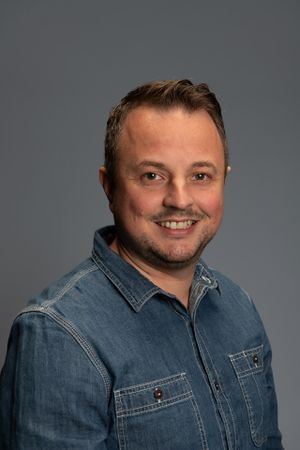LC 00803: verschil tussen versies
(Tekst vervangen door " {{Light Context |Supercontext=LC_00802 |Topcontext=PR 00413 |Toppage=Other |Sequence number=100000 |Sequence numbers=; |Context type=Situation |Heading=Get to know t...") |
Geen bewerkingssamenvatting |
||
| Regel 1: | Regel 1: | ||
'''Organization''' | |||
HZ Innovation Studio – The Garage depends on the co-design of various stakeholders that come and go. Three HZ colleagues are the stable factor and form the management team. Jessica Rongen-Borgs, Charlotte Röhl and Timo Derriks collectively operate the studio. Each has its own focus area and key responsibilities while decisions are made jointly. In case of need, we can cover for each other on particular tasks. | |||
Students are made aware of our existence and possibilities by means of our manual, student testimonials, descriptions of past and future projects, word-to-mouth, suggestions from their study coaches, social media or via our in-class visits. In these latter we present the Garage or provide a workshop that covers parts of the ways we think about and do things. | |||
Potential projects reach us directly or via HZ colleagues. Incoming project opportunities are discussed in close collaboration with HZ Nexus and colleagues of the Applied Research Centre Vitality. Matching projects have one thing in common, they all share the objective to regenerate Zeeland somehow. When they are deemed as potential match, they enter the project formulation and framing stage. It is often only a brief moment between having a formulated project and the actual start of it. | |||
'''Meet the team''' | |||
[[Bestand:Timo Derriks.jpg|miniatuur]] | |||
Timo Derriks | |||
''Strategy & innovation'' | |||
Timo is the Garage's educational leader. Operating mostly behind the scenes, he constantly scans the environment for possibilities to improve the learning that takes place within the innovation studio. His belief in the use of inter- and transdisciplinary learning is a driver to make the Garage matter for both the HZ and the region of Zeeland. In strategizing, there is a nonstop effort for optimalisation and educational restructuring by aligning the various involved practices. Agility is treasured in attempts to make the connection between study programs, research units and projects truly work. Guiding the managerial organization of The Garage, he does however argue it is the unfolding of projects and students’ learning by Charlotte and endeavors in community engagement by Jessica that guarantee the success of the studio. | |||
{{Light Context | {{Light Context | ||
|Supercontext=LC_00802 | |Supercontext=LC_00802 | ||
Versie van 29 nov 2022 09:08
Organization
HZ Innovation Studio – The Garage depends on the co-design of various stakeholders that come and go. Three HZ colleagues are the stable factor and form the management team. Jessica Rongen-Borgs, Charlotte Röhl and Timo Derriks collectively operate the studio. Each has its own focus area and key responsibilities while decisions are made jointly. In case of need, we can cover for each other on particular tasks.
Students are made aware of our existence and possibilities by means of our manual, student testimonials, descriptions of past and future projects, word-to-mouth, suggestions from their study coaches, social media or via our in-class visits. In these latter we present the Garage or provide a workshop that covers parts of the ways we think about and do things.
Potential projects reach us directly or via HZ colleagues. Incoming project opportunities are discussed in close collaboration with HZ Nexus and colleagues of the Applied Research Centre Vitality. Matching projects have one thing in common, they all share the objective to regenerate Zeeland somehow. When they are deemed as potential match, they enter the project formulation and framing stage. It is often only a brief moment between having a formulated project and the actual start of it.
Meet the team
Timo Derriks
Strategy & innovation
Timo is the Garage's educational leader. Operating mostly behind the scenes, he constantly scans the environment for possibilities to improve the learning that takes place within the innovation studio. His belief in the use of inter- and transdisciplinary learning is a driver to make the Garage matter for both the HZ and the region of Zeeland. In strategizing, there is a nonstop effort for optimalisation and educational restructuring by aligning the various involved practices. Agility is treasured in attempts to make the connection between study programs, research units and projects truly work. Guiding the managerial organization of The Garage, he does however argue it is the unfolding of projects and students’ learning by Charlotte and endeavors in community engagement by Jessica that guarantee the success of the studio.

